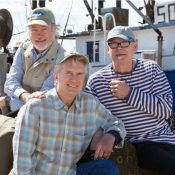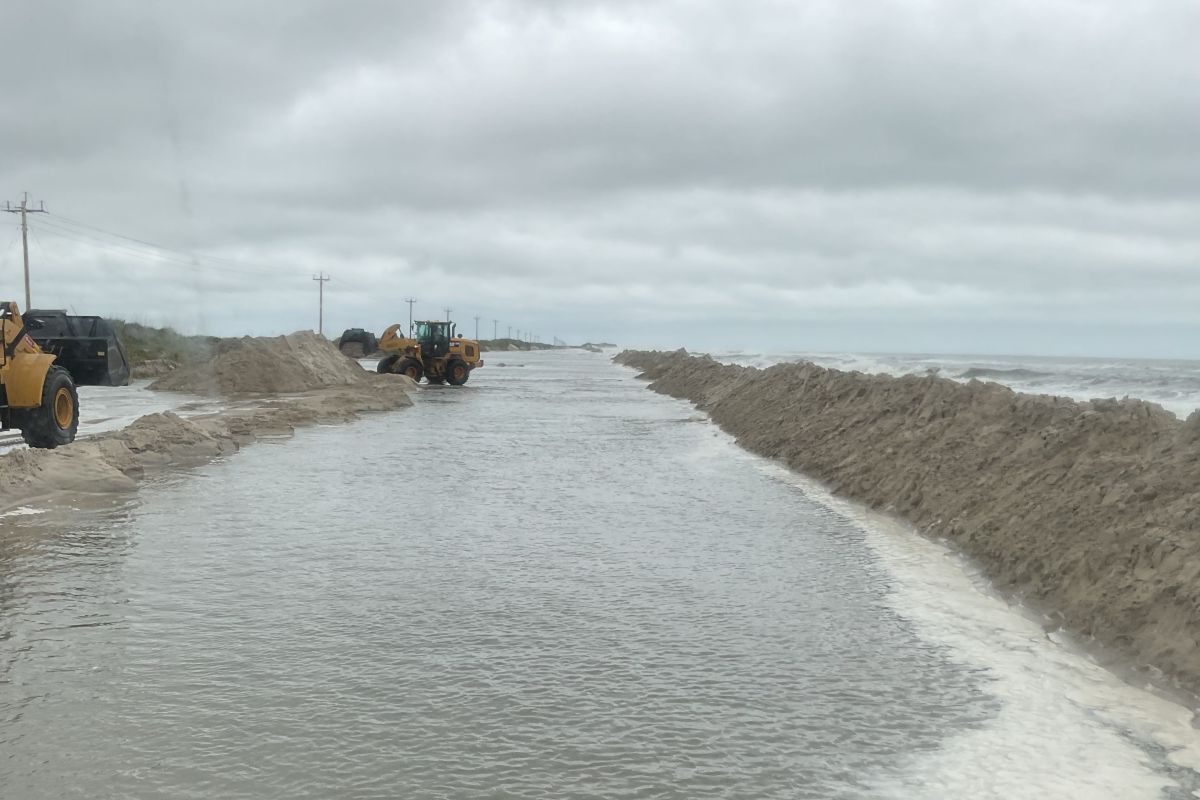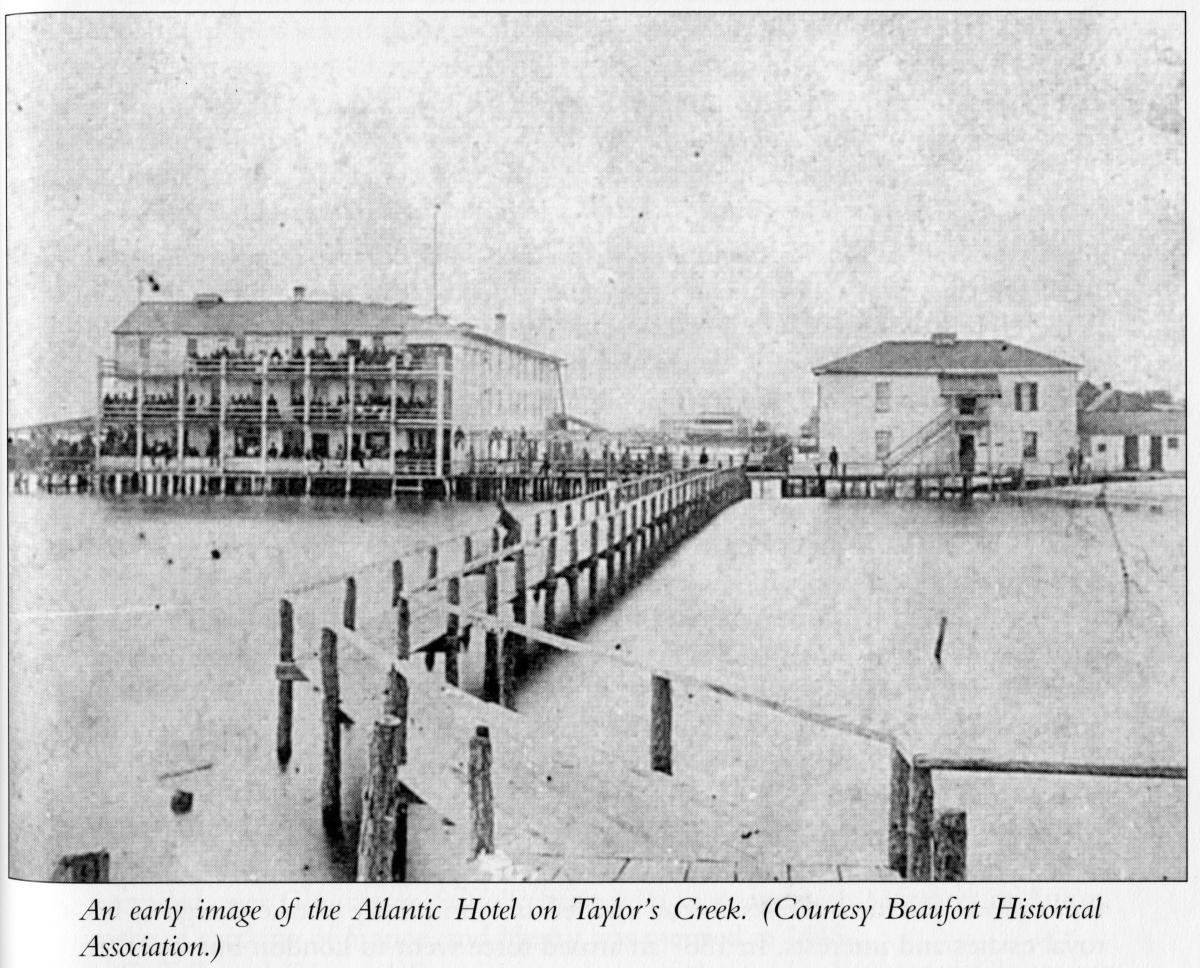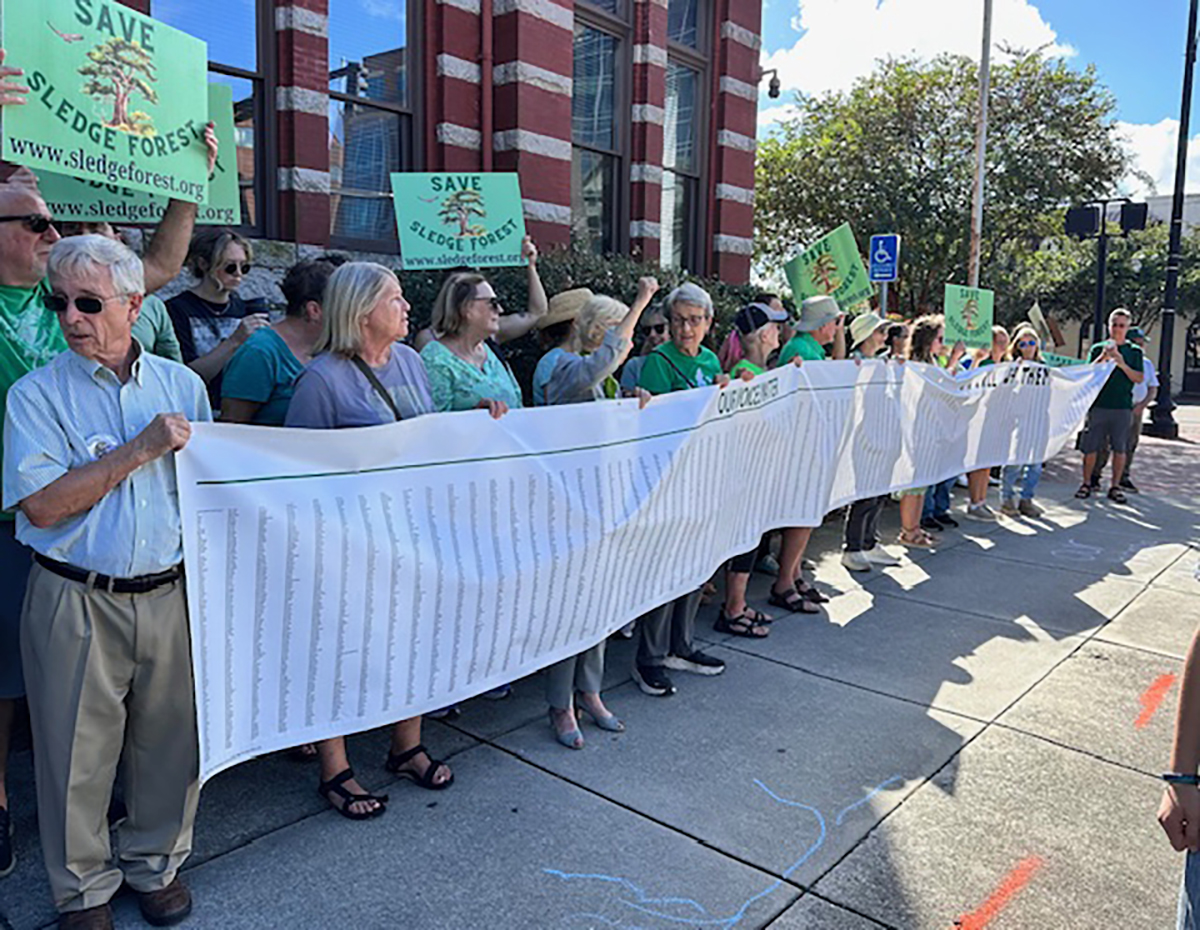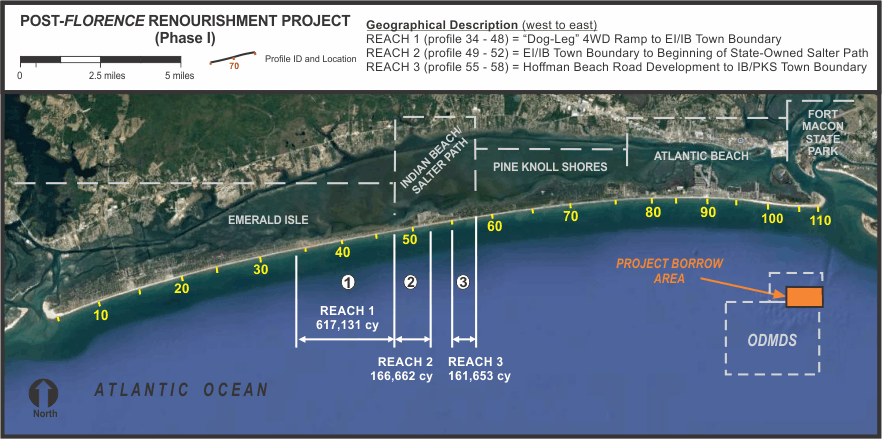
EMERALD ISLE – Weather and sea conditions last week forced work to pause, but the Post-Florence Renourishment Project for Bogue Banks is well underway, the Carteret County Shore Protection Office announced Monday.
Phase 1 of the project, which includes part of Emerald Isle, Indian Beach and Salter Path, is expected to use 945,446 cubic yards of sand from the offshore dredged material disposal site associated with the Morehead City Federal Navigation Project. Emerald Isle is to receive 617,131 cubic yards, Indian Beach 617,131 cubic yards and the unincorporated area of Salter Path 56,410 cubic yards along the 5.2 miles of shoreline in three areas, or reaches, according to the shore protection website.
Supporter Spotlight
Work was completed March 17 on Indian Beach and Salter Path, or Reach 3, where the project began March 8, and the first load of sand was delivered March 18 to Reach 2 in Indian Beach. Temporary pipes have been put in place on the beaches as part of the project, the first of which was in Indian Beach in February.
County Shore Protection Manager Greg “Rudi” Rudolph told Coastal Review Online last week the project should be in Emerald Isle, or Reach 1, about April 1, the final leg of Phase 1.
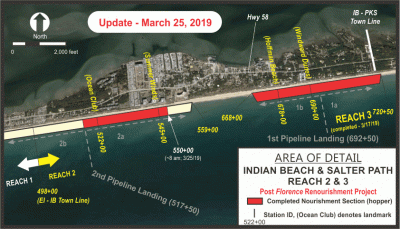
“Productivity has been outstanding – the sand quality, the weather, the lack of mechanical issues, and the avoidance of turtles have all been in our favor. Only takes one of those factors to go sideways to derail things for a while,” Rudolph said. “The difference between the beach now in the nourished areas compared to the non-nourished areas is very, very noticeable – almost shocking really.”
Rudolph shared details about the project in late February with the Emerald Isle Business Association in the town board of commissioners’ meeting room.
“The first phase of the project is $20 million. This is a big deal,” Rudolph told the crowd of almost three dozen.
Supporter Spotlight
“We have until April 30 to do the project,” he added, explaining that the timeline for renourishment projects is based on when turtles are nesting and in the water.
Rudolph joined a panel of speakers to answer questions about Hurricane Florence recovery and what to expect for the tourism season, especially regarding beach renourishment and the status of rental property, hotels and condos, in Emerald Isle.
Rudolph explained that the plan with the Bogue Banks renourishment project taking place now is to repair the half of the dune that was carved out by the storm and create a flat spot, or “towel space,” he said.
Rudolph said that his staff monitors the beach every May or June before hurricane season and again after hurricanes hit and knows how much sand is lost.
An application is in for Federal Emergency Management Agency reimbursement, but “fortunately, one-half of the county’s occupancy tax goes toward the sole purpose of nourishment,” Rudolph said.
Carteret County hotels, motels and short-term rentals collect a 6 percent tax that is used to fund beach renourishment and tourism marketing for the county. Collections totaled nearly $7.6 million for the year ended June 30, 2018, according to the Carteret County Finance Office.
After the renourishment projects were finished in the 2000s, the fund was allowed to grow. “After Florence hit, we had the data, we had the permit, we had the money in hand. Within a couple months, we had a nourishment contract. We didn’t have to take out a loan, we didn’t have to do any of that,” Rudolph added. The bid for the contract is from Illinois-based Great Lakes Dredging.
The dredge Liberty Island arrived in Morehead City Harbor from Charleston, South Carolina, the morning of March 8 and began work on Phase 1, which includes what Rudolph called the “dog leg,” through the eastern end of Emerald Isle, Indian Beach and Salter Path. Phase 2, planned for next winter, will be the remainder of Emerald Isle, Pine Knoll Shores and possibly part of Atlantic Beach, according to the website.
The second dredge, the Ellis Island, should arrive in early April. Built a year ago, the dredge is the biggest in the country, holding up to 15,000 cubic yards per load. Rudolph compared that to the haul of a dump truck, which is about 12 cubic yards. “The whole project is about a million cubic yards.”
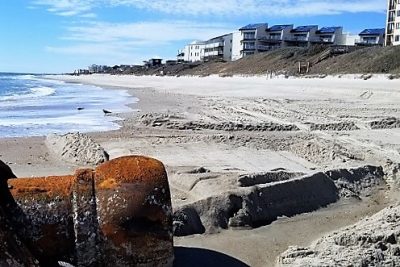
Rudolph said part of the dredging contract is to plant sea oats and bitter panicum on the dunes as part of the second phase next year.
But, “It’s no guarantee the funding will come next year,” he added. “If we don’t get FEMA reimbursement at all or the timing isn’t right, then we’re going to have a cash flow issue, but we’re going to worry about that after we get sand on the beach here within the next couple of months.”
For individual oceanfront property owners looking to plant or install a sand fence to renourish their dune, Rudolph gave the go-ahead, but with the caveat the effort may be damaged at some point during the planned renourishment project.
The nourishment schedule will affect rebuilding public beach accesses before the busy season.
Alesia Sanderson, director of the town’s Parks and Recreation, who attended the meeting, said that all but 12 walkways in town had undergone annual inspections and were brought up to standard.
She said that the eastern end of the beach was most damaged during the hurricane, leaving many of the walkways broken at the crest of the dune and some just hanging with sometimes a 20-foot drop.
With the renourishment project wrapping up by April 30, there’s “a real time constraint on us for a couple of reasons. It’s going to be difficult to find someone to build 12 walkways between April 30 and the beginning of our peak season, Memorial Day, and that’s if we find available contractors willing to submit competitive bids,” Sanderson said.
She added that they are in the process of making those 12 walkways safe, “Basically tearing out all the wooden structure. From there, (beach) nourishment will be complete and then we’ll push sand up to where the termination point is so that every walkway that the town of Emerald Isle has will be open and usable.”
While it won’t be ideal because it will be more difficult to pull a wagon or push a beach cart, the accesses “will not hinder any of those visitors in the houses that are not oceanfront, they’re still going to be able to access the beach as they normally would,” Sanderson said.
Readying Accommodations
Heidi Barlow, president of the business association, said before kicking off the discussion, “All of us work in different industries, but we all work in the same community … we felt like bringing the professionals here to you to field the questions directly on disaster recovery and what our future looks like here on the island.”
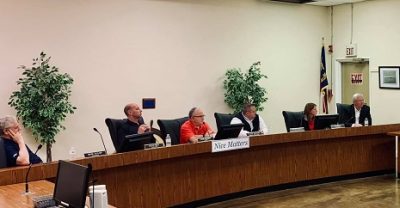
In addition to Rudolph, the panel included Emergency Management Coordinator Jenn Sawyer, who is also the planner for Carteret County Emergency Services; Emerald Isle Police Chief Tony Reese; Emerald Isle Mayor Eddie Barber; Woody Warren, Bluewater Vacation Rentals and Sales owner; and Jim Browder, executive director of Crystal Coast Tourism Development Authority.
Looking ahead for the county, Browder said 75 percent of the hotels could be open by June, “but that’s probably a bit optimistic.”
He said that the home rental situation is much better than that of condominiums and townhomes.
Warren added, “I feel as far as single-family homes and duplexes, that by far the greatest majority of those should be completed by summertime.”
Officials were worried that condominiums would not be repaired in time, but Warren said several Emerald Isle condominium units were expected to be ready by June.
As for home purchases, Warren said that in September he would have predicted there would have been a fallout with a lot of contracts, but 2018 ended up being a good year.
“2019 has started out a little bit slower … maybe the houses that are being built or getting repaired will be ready by the spring,” he said.
Browder said stores and restaurants here should plan for a longer season.
“Early indications look that we’re having a little bit higher demand for the normal high season,” he said, adding that they’re seeing a bit more activity from Easter to May, “More interest than we’ve had in the past. We’re hoping our season spreads a little bit … but should plan for a slightly longer season rather a peak season.”
He said that the beach town has an “incredible number of repeat customers visiting the same places for 20 to 30 years. They’re excited about coming back.”
Florence ‘A Lot Different’
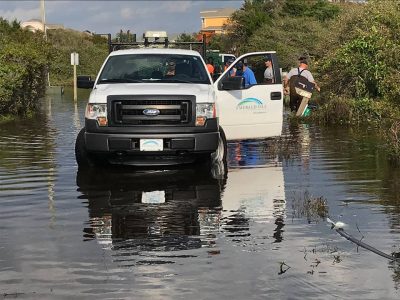
“This particular storm was a lot different than some of the more recent-history storms we’ve had,” said Sawyer with county emergency services when reflecting on the county’s response.
She said that in typical storms, the worst damage is limited to specific areas, but Hurricane Florence affected the entire county.
“Carteret County is unique compared to other counties across the state. We’re extremely long, were almost 100 miles of coastline, so there are challenges there and … the impacts were countywide,” she explained, including to infrastructure and accessibility.
“There were a lot of moving pieces, it was dynamic, and it was challenging for the fact that most of us have not seen a storm of this magnitude in recent history,” Sawyer said.
Town officials have discussed building a public safety center, Reese told the group.
“What we’re looking at now is the possibility in the future of designing a building that would house public safety and permit us to keep our operation center here on the island,” the police chief said.
Reese said the focus for police immediately after the storm was to assess damage and identify safety concerns. That work began before the hurricane had completely passed, and during the storm, teams began removing trees from roadways and trying to get the town ready to be reopened to the public.
Reese explained that Bogue Banks mayors decide when to reopen the island.
“It doesn’t do us any good to open up Emerald Isle if Indian Beach and Pine Knoll Shores are not going to allow people in their town, now we’re backing up cars down the highway and that’s just not a good thing,” he said.
The police chief said one of the reasons the town weathered the storm so well was its evacuation response.
“The fact that we were able to get somewhere between 80 and 90 percent of the folks off this island freed up the town emergency services to focus on dealing with the storm rather than having to run rescues for those who decided to remain in town, or were stuck because of flooding or tree on their house,” he said.
The town also put in place a curfew, which Barber said was an important decision. “I also think that having the curfew at nighttime once we allowed residents back over … I felt it was in the best interest in public safety to have a curfew since so many didn’t have electricity.”
Warren agreed because, with access cut off to the island, vacationers who couldn’t use their short-term rentals could then collect on travel insurance.
Reese added that the police department must enforce the curfew.
“When we see someone on your property, it takes an officer off the street to figure out what’s going on,” He said. “Don’t be scared to call me and we will work with you to get you where you can leave your property safely … “We want to work with you, give you all the time you can, just need to communicate with us,” he said.
Barber told the crowd that the town signed a contract before the hurricane with a company to collect debris. “So far we’ve spent over $2,100,000 in debris removal, and that’s a lot of money the town has spent on debris removal, and we’re still waiting to get the money reimbursed from FEMA.”
In addition to being prepared for debris removal, the town was proactive months before the storm by signing a contract for pumps to alleviate street flooding, Barber said.
The town had pumps secured months before the storm, but they didn’t expect there would be 31 inches of rain, Barber added. Additional pumps were secured but with the road closures between Emerald Isle and Wilmington, the pumps didn’t get to the town as quickly as needed.
Following the meeting, Barlow told Coastal Review Online that the overall feedback from the meeting was positive.
“Many were unaware of the number of hotels and rentals that are still shut down from the storm along with the process in place for the beach renourishment including the planting of the dune grass. I believe these were the big key takeaways for most,” she said. “The town recovery as far as the beach access repairs and number that may not be restored before the season was also enlightening.”


